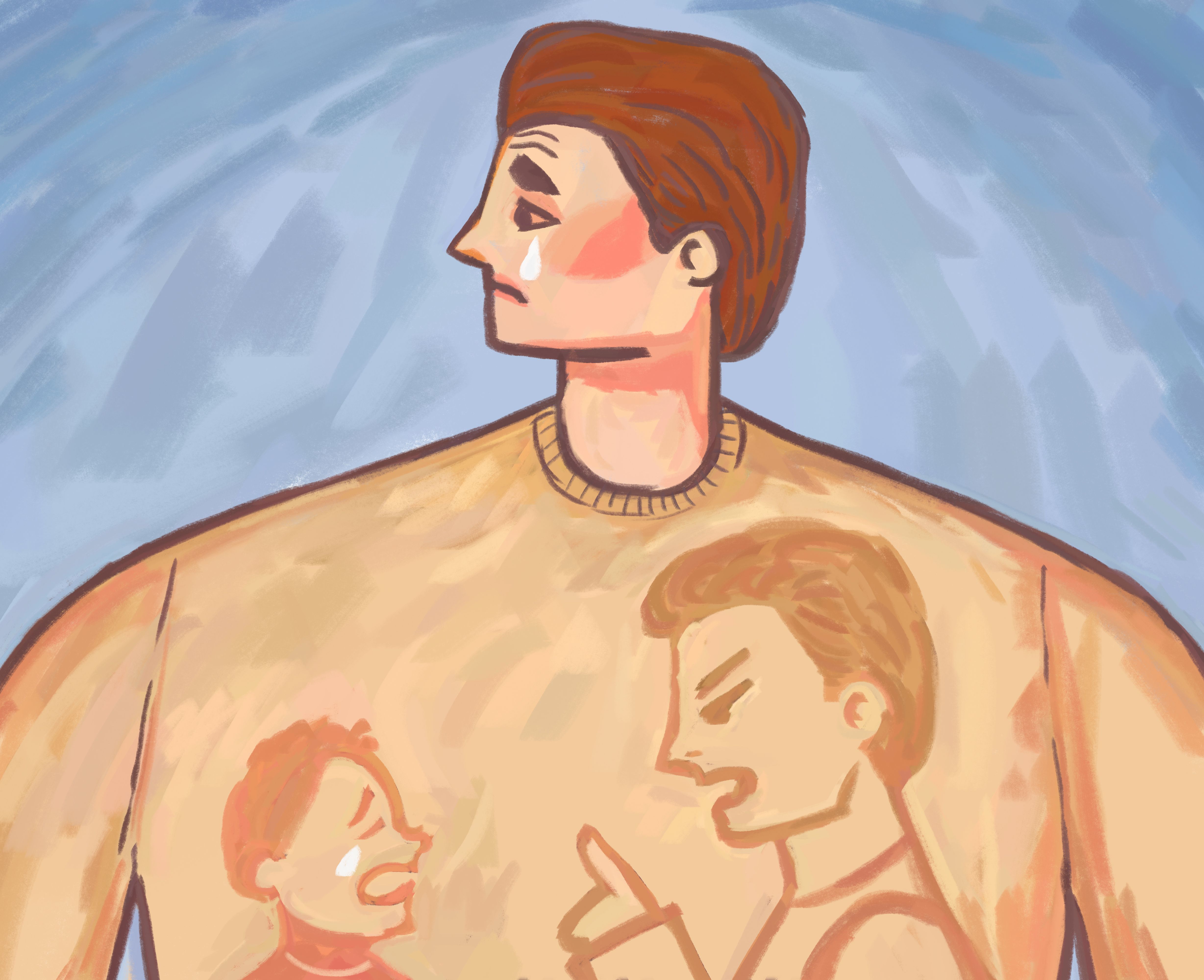Relationship struggles often have a hidden story: late-night overthinking, panic after a fight, or pulling away just as intimacy grows. These reactions stem from attachment trauma, the nervous system’s earliest wounds regarding safety, love, and connection.
Attachment trauma begins before memory, when the brain learned to adapt to inconsistent or unsafe caregiving. These survival strategies were helpful at the time, but can create patterns that echo in adulthood.
The good news? These patterns aren’t fixed. Neuroscience and attachment-based therapies show the nervous system can be reprogrammed, turning old survival strategies into secure, flexible ways of loving and being loved.
We’ll talk about what attachment trauma is, how it shapes relationships, and practical steps to heal, transforming outdated patterns into healthy connections.
What Is Attachment Trauma?
Traditional psychology defines attachment trauma as a "disruption in the bond between child and primary caregiver," which, while a good definition, misses a key part of the truth: attachment trauma creates core wounds that later work as your relationship operating system.
Attachment patterns start in infancy and early childhood. During the critical attachment phase, the nervous system asked: "Am I safe to exist as myself?" Based on the answer, it developed one of three core wounds:
- "I'm not enough" drives Anxious Preoccupied attachment, creating constant fear that love will disappear unless earned perfectly
- "I must be self-sufficient" creates Dismissive Avoidant patterns, where needing others equals danger
- "I'm defective" and "Love leads to pain" create Fearful Avoidant attachment, the push-pull pattern, wanting connection while fearing destruction
These wounds are neurological patterns. When your partner arrives late, your wound activates, flooding your system with survival chemicals. This is why understanding your childhood doesn't stop the panic. You're operating at the wrong nervous system level.
The Four Attachment Styles
Your attachment style doesn’t define who you are; it was how you learned to survive. John Bowlby, the British psychiatrist and psychoanalyst who pioneered attachment theory, argued that the relational patterns we form in childhood remain 'relatively unchanged' throughout life.
However, subconsious reprogramming proves they're changeable. This means that anyone can move from an insecure to Secure Attachment.
- Secure Attachment: The connection feels safe, needs get met, and ruptures repair naturally. Through earned secure attachment, this becomes everyone's healing destination.
- Anxious Preoccupied: Inconsistent caregiving taught you to amplify distress for attention. Now every delayed text triggers your "I'm not enough" wound. You need constant reassurance that never feels like enough.
- Dismissive Avoidant: Emotional rejection taught you that self-sufficiency equals survival. Intimacy feels suffocating because needing others once meant disappointment.
- Fearful Avoidant: Your caregiver was both comfort and threat, creating the hot-cold pattern. You desperately crave the connection that terrifies you.
Each style represents brilliant adaptation, not character flaws. You're running outdated protection software that can be updated.
Signs You Have Attachment Trauma
Anxious Attachment Triggers
For anxiously attached individuals, the nervous system is constantly scanning for abandonment. This shows up as:
- Obsessively checking their phone, equating silence with danger
- Creating conflict or drama to generate intensity, mistaking chaos for closeness
- Feeling unable to be alone without spiraling into panic or fear of rejection
Dismissive Avoidant Signs
For avoidants, survival means shutting down emotions and retreating from vulnerability. That looks like:
- Going emotionally numb during conflict, as if a “switch” flips for protection
- Feeling physical discomfort when receiving affection, even if closeness is desired
- Living with a persistent sense of emptiness, even in committed relationships
Fearful Avoidant Patterns
Fearful Avoidants experience the push-pull of craving intimacy but fearing engulfment. Their nervous system signals show up as:
- Pursuing closeness one moment, then sabotaging it the next
- Running hot and cold in painfully predictable cycles
- Constantly testing partners, pulling them close, then pushing them away, to see if they’ll stay
These individuals didn’t become “too sensitive” by accident. They developed micro-expression reading, noticing the most minor shifts in tone or body language, because their childhood required it. If appropriately channeled, what once kept them safe can now become a tool for deeper awareness and healthier connection.
| Discover Your Attachment Style |
|---|
| Take our free Attachment Style Quiz to discover if you're impacted by deep attachment trauma. |
What Causes Attachment Trauma?
Your parents didn’t have to be monsters for you to carry attachment wounds. In fact, the most confusing and long-lasting pain often comes from caregivers who deeply loved you but couldn’t meet your nervous system’s needs.
Attachment trauma isn’t always about dramatic events; it can be the subtle, everyday mismatches between what a child needs and what a caregiver can provide.
Overt causes are easier to recognize. These include:
- Physical, emotional, or sexual abuse
- Severe neglect
- Divorce, abandonment, or sudden loss of a caregiver
- Chronic exposure to conflict, addiction, or mental illness in the home
These experiences create obvious disruptions in a child’s sense of safety and stability.
Covert causes are more complex to spot but equally impactful. They might look like:
- Emotional unavailability: a parent physically present but emotionally distant
- Enmeshment: where your needs were lost in meeting theirs
- Poor boundaries: being parentified, or made responsible for adult problems
- Misattunement: a parent consistently misunderstanding or minimizing your feelings
Even “good” parents can unintentionally create attachment trauma. For example:
- An anxious parent may constantly warn you of danger, teaching your nervous system that the world is unsafe.
- A perfectionist parent may withhold affection unless you succeed, planting the belief: “I’m not enough unless I perform.”
- A depressed parent may unintentionally communicate that your needs are too big or overwhelming, shaping the belief: “I’m too much.”
These subtle but repeated experiences are often more challenging to process because they’re mixed with love, care, and moments of genuine connection.
This contradiction leaves many adults asking: “Why do I feel so insecure when my parents did their best?”
The Generational Ripple
Attachment trauma often runs through families. Your grandmother’s unresolved grief may have turned into your mother’s emotional unavailability, which then shaped your own attachment pattern.
These wounds are rarely born in isolation; they’re often inherited survival strategies passed down until someone decides to break the cycle. This is also commonly known as the "Mother Wound".
The same can be applied to fathers. They, too, carry on generational trauma. And they are referred to as the "Father Wound".
Understanding where your attachment trauma comes from isn’t about blame. It’s about recognition and choice. When you see the origins clearly, you step into the role of cycle-breaker—the generation that says: “This pattern stops here.”

How Attachment Trauma Sabotages Relationships
Attachment trauma doesn’t lead people to choose the wrong partners; it leads them to choose familiar ones. The nervous system gravitates toward patterns it already knows, even when those patterns are painful.
Unresolved attachment wounds create an unconscious template that draws individuals toward partners whose defenses perfectly trigger their own.
A clear example is the anxious-avoidant trap. Anxiously attached individuals carry an abandonment fear that collides with an avoidant partner’s fear of engulfment. When one reaches for closeness, the other instinctively withdraws. That withdrawal, in turn, heightens the anxious partner’s desperation for reassurance, which only reinforces the avoidant partner’s need for space.
Each person’s protective strategy becomes the other’s activation point, creating a cycle that can feel impossible to escape.
Yet, these patterns are invitations for healing. Triggers in relationships are not punishment; they are information. The psyche uses present-day dynamics to attempt to resolve what childhood could not. The distance that activates an abandonment wound is not evidence of being unlovable. What it really is is an opportunity to rewire the nervous system to tolerate space with greater security.
In this way, relationships reveal not flaws but unhealed wounds. Every activation is the nervous system asking for repair with the adult resources available now.
Rather than serving as evidence that a relationship is doomed, triggers can become doorways to growth and transformation.
Healing Attachment Wounds with Somatic Techniques
Attachment trauma lives in your body, not just your mind. To bring it our and heal it, you can utilize specific somatic practices. They help rewire patterns without words. Here is how you can use them based on attachment styles.
Anxious Sequence:
- Legs-up-wall (5 minutes) for parasympathetic activation
- Weighted blanket compression for containment
- Extended exhales (4 in, 8 out) training release
- Bilateral tapping repeating: "I am enough alone"
Dismissive Avoidant Sequence:
- Heart-opening stretches creating emotional space
- EFT tapping while naming feelings
- Partner eye-gazing, building intimacy tolerance
Fearful Avoidant Sequence:
- Alternating activation/calming (shaking then stillness)
- Teaching the nervous system that both states are survivable
Can Attachment Trauma Be Fully Healed?
The short answer: yes.
Healing doesn’t mean you’ll never feel triggered again. When you’re on the right path, it means triggers no longer run your life. It’s more about teaching your nervous system that safety, love, and stability are possible here and now, than erasing your history.
"Healed" means:
- Triggers may still activate but don’t hijack your thoughts or behaviors.
- Recovery happens in minutes or hours instead of days or weeks.
- Conflicts turn into opportunities for deeper intimacy instead of disconnection.
- Both independence and connection feel safe; you don’t fear losing yourself in love or being abandoned when you need space.
Signs you're healing:
- Catching triggers before they escalate, noticing body sensations or thoughts early, and self-regulating.
- Friends, partners, or coworkers point out that you seem calmer, more grounded, or easier to connect with.
- Old patterns—like over-texting, stonewalling, or sabotaging closeness—barely register as options anymore.
- Past relationships no longer feel like evidence of failure; instead, you understand them with compassion and see how they shaped your growth.
Healing is possible because attachment isn’t hardwired; it’s adaptive. The same survival strategies that once kept you safe can, with time and intentional practice, be rewired into secure patterns that allow love, safety, and trust to finally take root.
You Can Embrace an Secure Attachment
You now have what most spend decades seeking: a complete blueprint for healing attachment trauma at its root. The question isn't whether you can heal, it's whether you'll commit to daily practice.
Attachment trauma told you lies about who you are. Those wounds were brilliant adaptations to impossible circumstances. Now it's time to update the software.
Your transformation ripples outward. Children inherit security instead of wounds. Partners experience safety to heal. You become living proof that patterns stop, wounds heal, and secure love is possible.
| If Attachment Trauma is Sabotaging Your Relationships |
|---|
| Healing begins with learning to regulate emotions in real time. That’s exactly what our Principles & Tools for Reprogramming the Subconscious Mind course is designed to do, help individuals calm their nervous system, break free from old patterns, and finally experience secure and lasting love. |
Share this Article
Let's stay connected!
Get personal development tips, recommendations, and exciting news every week.
Become a Member
An All-Access Pass gives you even more savings as well as all the relationship and emotional support you need for life.

Top Articles
31 AUG 2023
8 Ways to Heal a Fearful Avoidant Attachment Style
Healing your fearful avoidant attachment style is possible with 8 simple steps, including communicating your needs and releasing unrealistic expectations.
27 OCT 2023
Best Strategies for Intimacy & Sex with Dismissive Avoidants
Learn about dismissive avoidants, sex and how you can bring your relationship closer together in this extensive guide.
13 JUN 2024
Signs Your Avoidant Partner Loves You
Are you dating an avoidant but don’t if they love you? Here are the clear-cut signs that an avoidant loves you.